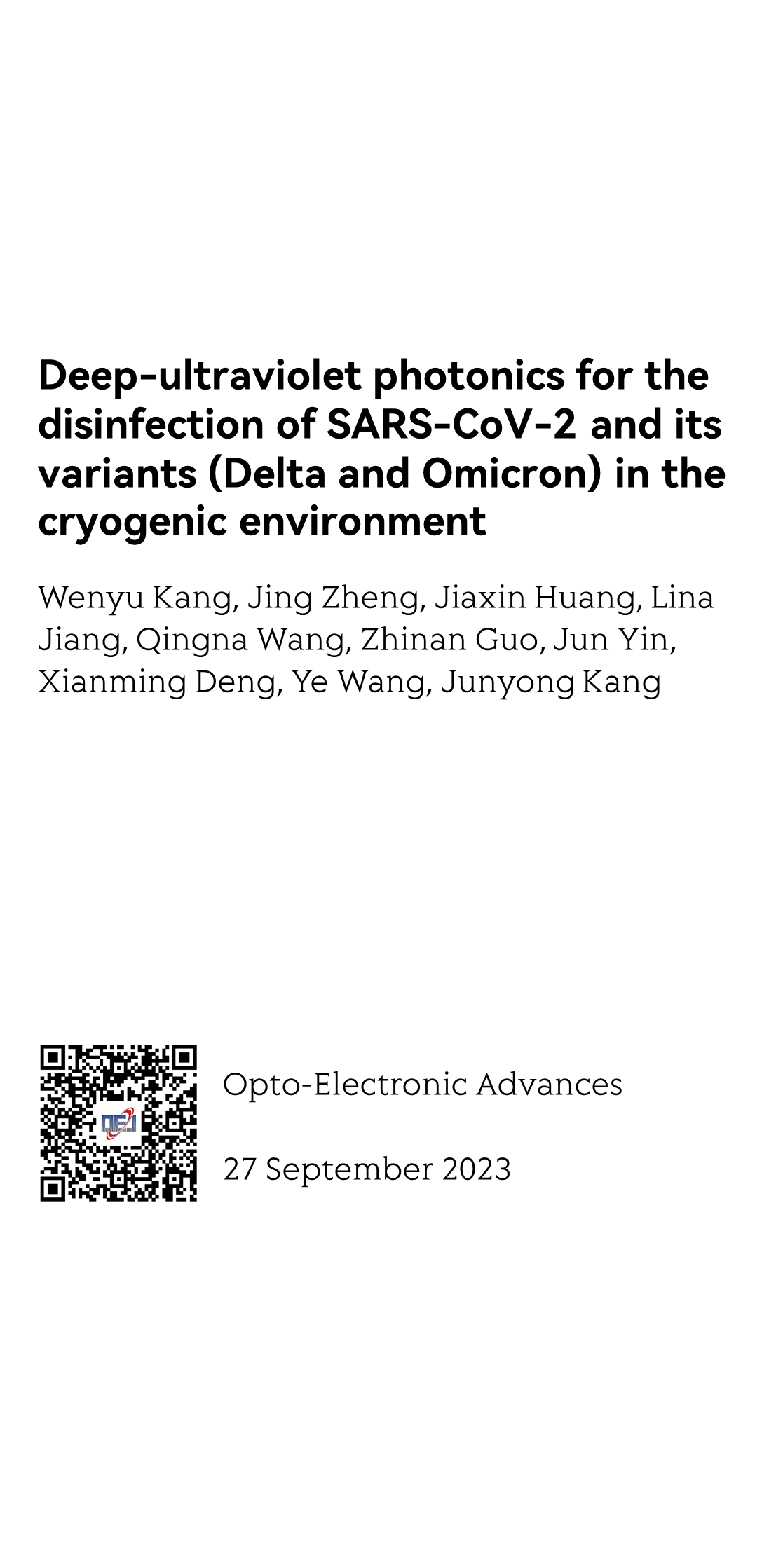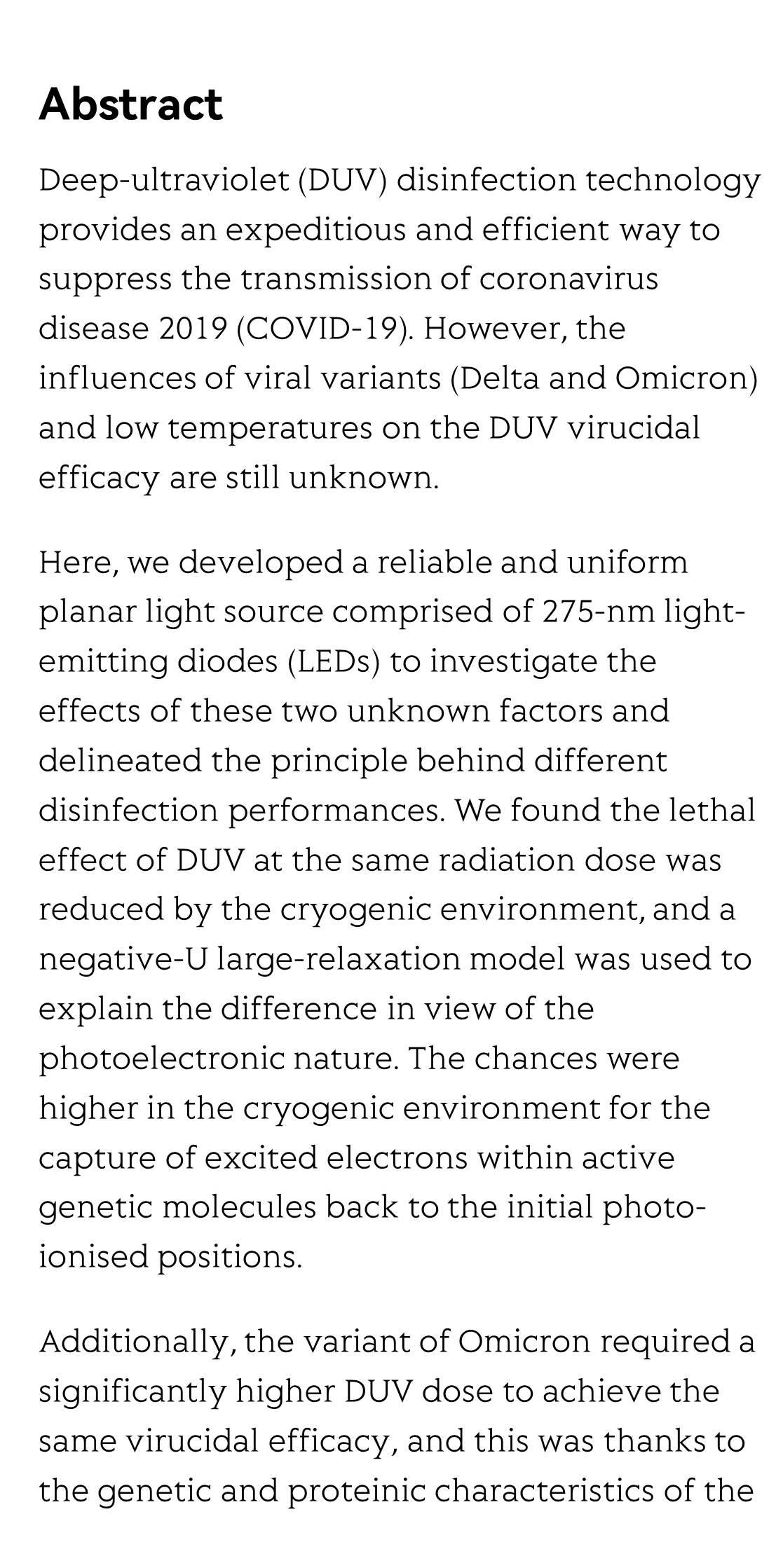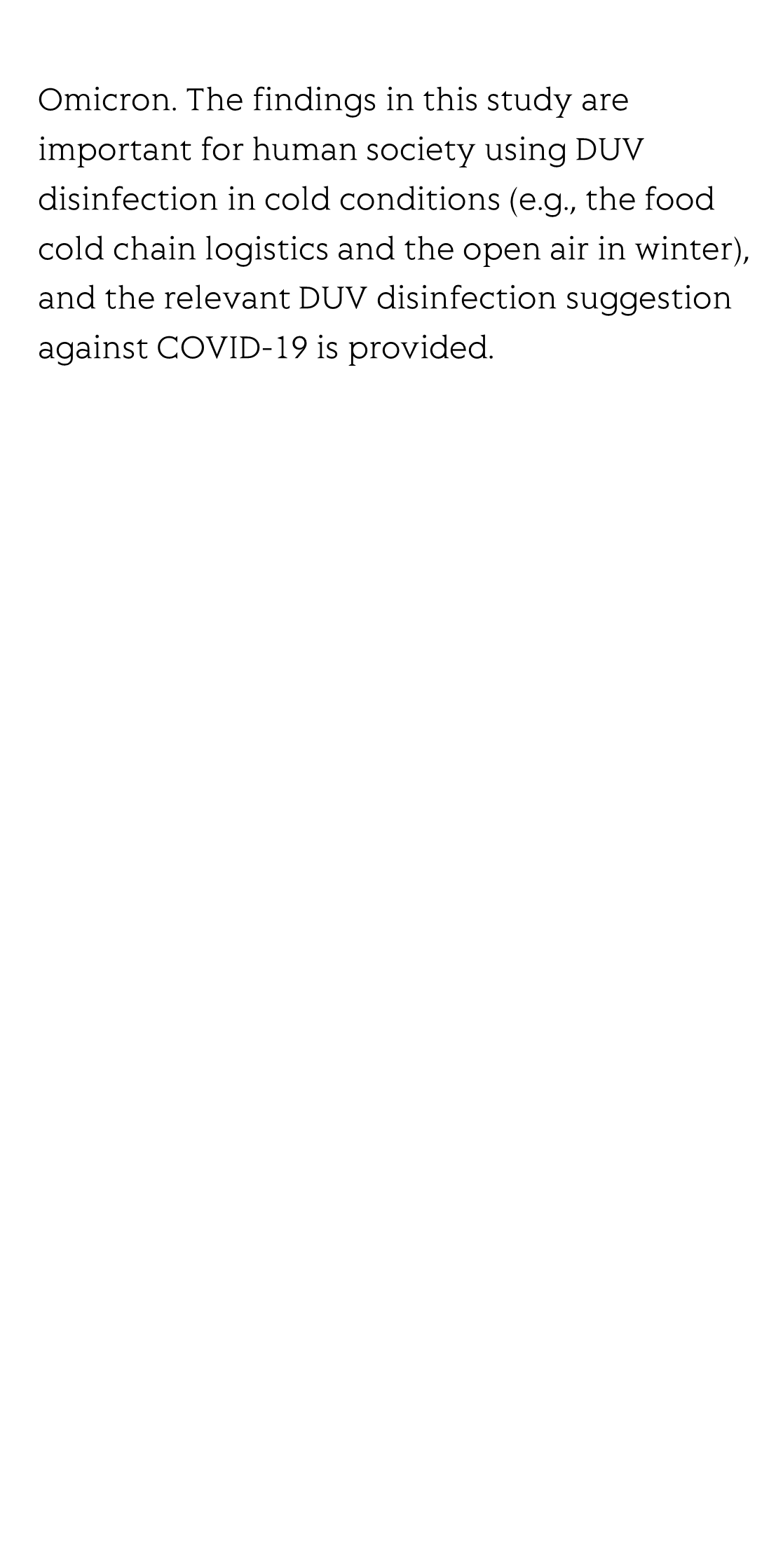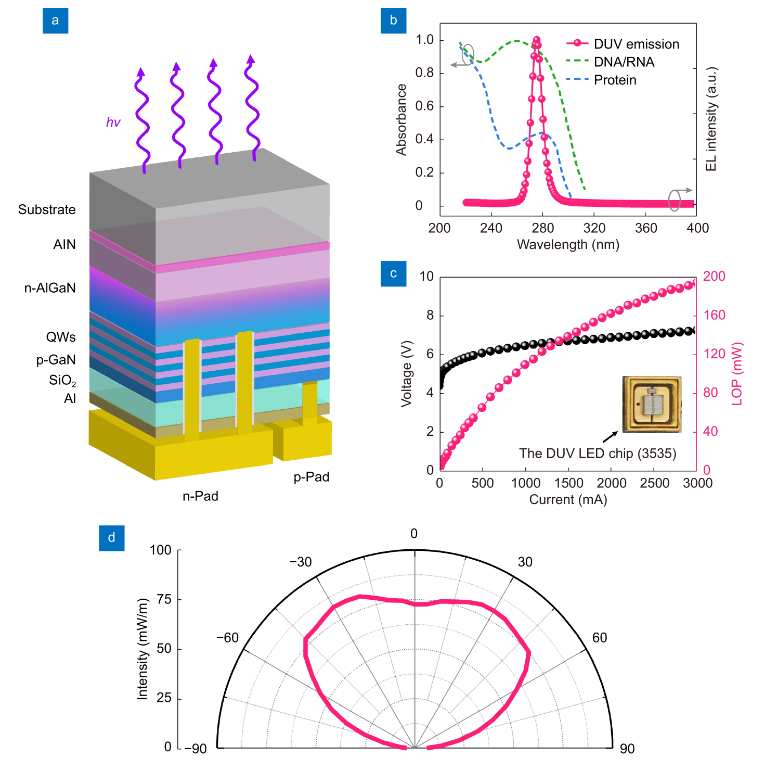(Peer-Reviewed) Deep-ultraviolet photonics for the disinfection of SARS-CoV-2 and its variants (Delta and Omicron) in the cryogenic environment
Wenyu Kang 康闻宇 ¹, Jing Zheng 郑靖 ², Jiaxin Huang 黄家新 ¹, Lina Jiang 蒋丽娜 ², Qingna Wang 王清娜 ¹ ³, Zhinan Guo 郭志南 ², Jun Yin 尹君 ¹, Xianming Deng 邓贤明 ⁴, Ye Wang 王野 ¹, Junyong Kang 康俊勇 ¹
¹ Engineering Research Center of Micro-nano Optoelectronic Materials and Devices, Ministry of Education, Fujian Key Laboratory of Semiconductor Materials and Applications, College of Chemistry and Chemical Engineering, Pen-Tung Sah Institute of Micro-Nano Science and Technology, College of Physical Science and Technology, Xiamen University, Xiamen 361005, China
中国 厦门 厦门大学物理科学与技术学院 萨本栋微米纳米科学技术研究院 化学化工学院 福建省半导体材料及应用重点实验室 微纳光电子材料与器件教育部工程研究中心
² Xiamen Center for Disease Control and Prevention, Xiamen 361021, China
中国 厦门 厦门市疾病预防控制中心
³ Xiamen Intelligent Health Research Institute, Xiamen 361009, China
中国 厦门 厦门市智慧健康研究院
⁴ School of Life Sciences, Xiamen University, Xiamen 361005, China
中国 厦门 厦门大学生命科学学院
Opto-Electronic Advances, 2023-09-27
Abstract
Deep-ultraviolet (DUV) disinfection technology provides an expeditious and efficient way to suppress the transmission of coronavirus disease 2019 (COVID-19). However, the influences of viral variants (Delta and Omicron) and low temperatures on the DUV virucidal efficacy are still unknown.
Here, we developed a reliable and uniform planar light source comprised of 275-nm light-emitting diodes (LEDs) to investigate the effects of these two unknown factors and delineated the principle behind different disinfection performances. We found the lethal effect of DUV at the same radiation dose was reduced by the cryogenic environment, and a negative-U large-relaxation model was used to explain the difference in view of the photoelectronic nature. The chances were higher in the cryogenic environment for the capture of excited electrons within active genetic molecules back to the initial photo-ionised positions.
Additionally, the variant of Omicron required a significantly higher DUV dose to achieve the same virucidal efficacy, and this was thanks to the genetic and proteinic characteristics of the Omicron. The findings in this study are important for human society using DUV disinfection in cold conditions (e.g., the food cold chain logistics and the open air in winter), and the relevant DUV disinfection suggestion against COVID-19 is provided.
Flicker minimization in power-saving displays enabled by measurement of difference in flexoelectric coefficients and displacement-current in positive dielectric anisotropy liquid crystals
Junho Jung, HaYoung Jung, GyuRi Choi, HanByeol Park, Sun-Mi Park, Ki-Sun Kwon, Heui-Seok Jin, Dong-Jin Lee, Hoon Jeong, JeongKi Park, Byeong Koo Kim, Seung Hee Lee, MinSu Kim
Opto-Electronic Advances
2025-09-25
Dual-frequency angular-multiplexed fringe projection profilometry with deep learning: breaking hardware limits for ultra-high-speed 3D imaging
Wenwu Chen, Yifan Liu, Shijie Feng, Wei Yin, Jiaming Qian, Yixuan Li, Hang Zhang, Maciej Trusiak, Malgorzata Kujawinska, Qian Chen, Chao Zuo
Opto-Electronic Advances
2025-09-25







